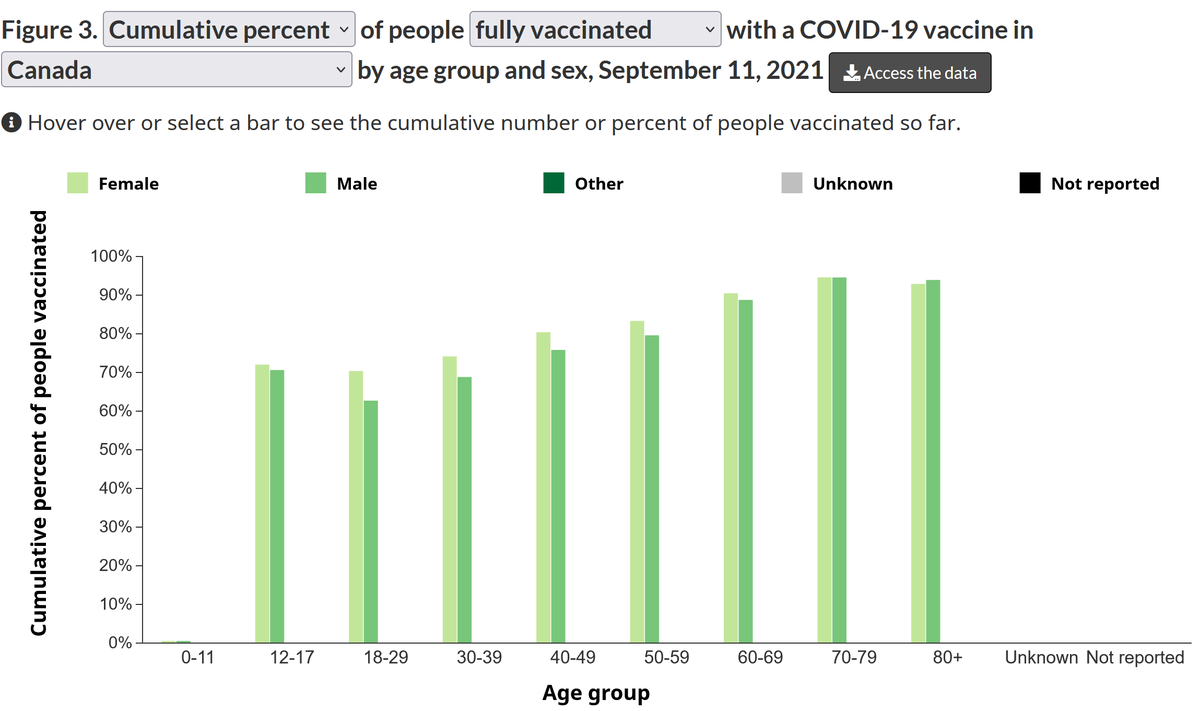
@BilasHeidi @GermHunterMD @DorisGrinspun I agree, Ilan. Outside Quebec, and maybe Manitoba, no province appears to be accurately identifying their COVID deaths either. The best we'll get will be excess all-cause mortality. And there is specific cause of death reporting.
@BilasHeidi @GermHunterMD @DorisGrinspun The problem is that in multiple provinces, particularly those out west, we don't even know how many people died until 18-24 months after the deaths. We won't be able to estimate the toll of the current wave in Alberta likely until 2023.
@BilasHeidi @GermHunterMD @DorisGrinspun Canada is the only high income OECD country that doesn't legally require deaths to be reported nationally no later than 1 week after they have occurred. There appears to be little interest in this on the part of many provinces.
@BilasHeidi @GermHunterMD @DorisGrinspun It's not wonder--it makes it hard to hold provinces accountable when the deaths are still fresh in everyone's minds. And the information comes so late that it's not useful for policy making.
@BilasHeidi @GermHunterMD @DorisGrinspun I just finished excess mortality estimates with the latest batch of death data released by StatsCan earlier this month.
Death reporting is still too incomplete to meaningfully estimated excess mortality past Dec 26, 2021, and even then the estimates are likely too low.
Death reporting is still too incomplete to meaningfully estimated excess mortality past Dec 26, 2021, and even then the estimates are likely too low.
@BilasHeidi @GermHunterMD @DorisGrinspun After adjusting for excess mortality attributable to toxic drug deaths, untimely (excess) deaths were 2.3X higher than reported COVID-19 deaths in Alberta, from Feb 1-Dec 26, 2021.
In BC, excess mortality is 2.8X reported COVID-19 deaths.
In BC, excess mortality is 2.8X reported COVID-19 deaths.
@BilasHeidi @GermHunterMD @DorisGrinspun In Saskatchewan, excess mortality is 3.4X greater than reported C19 deaths.
In Ontario, it's 1.8X greater.
Reported C19 deaths and excess mortality are closer in other provinces. ON, SK, AB and BC are the big problems.
In Ontario, it's 1.8X greater.
Reported C19 deaths and excess mortality are closer in other provinces. ON, SK, AB and BC are the big problems.
@BilasHeidi @GermHunterMD @DorisGrinspun I'm using seroprevalence data now to estimate how much of that was likely C19, and so far it's looking like it almost all is.
@BilasHeidi @GermHunterMD @DorisGrinspun Once we get to the 3rd wave, when the hospitals were much more acutely affected, I don't think it will be possible anymore to estimate what were C19 deaths that weren't identified as such, and what were indirectly caused by the staggering of the healthcare system under COVID-19.
@BilasHeidi @GermHunterMD @DorisGrinspun But the point is, we won't know for another 18 months or so what even happened in the 3rd wave.
As for now, when so many 50+ aren't even fully vaccinated, there's no sign that we'll be able to let up on NPIs and vaccination without experiencing surges that may break acute care.
As for now, when so many 50+ aren't even fully vaccinated, there's no sign that we'll be able to let up on NPIs and vaccination without experiencing surges that may break acute care.
@BilasHeidi @GermHunterMD @DorisGrinspun Of course, not all of Canada will experience this. Quebec, Manitoba and multiple Atlantic provinces will have finished vaccinating 100% of people 70+ within the next few weeks. It can be done, but this likely won't happen until next summer in ON, AB and SK (BC by ~Jan/22).
@BilasHeidi @GermHunterMD @DorisGrinspun Anyway, I doubt there will be much real accountability for, or accounting of, any of these deaths. It is grotesque, and that won't matter.
• • •
Missing some Tweet in this thread? You can try to
force a refresh











